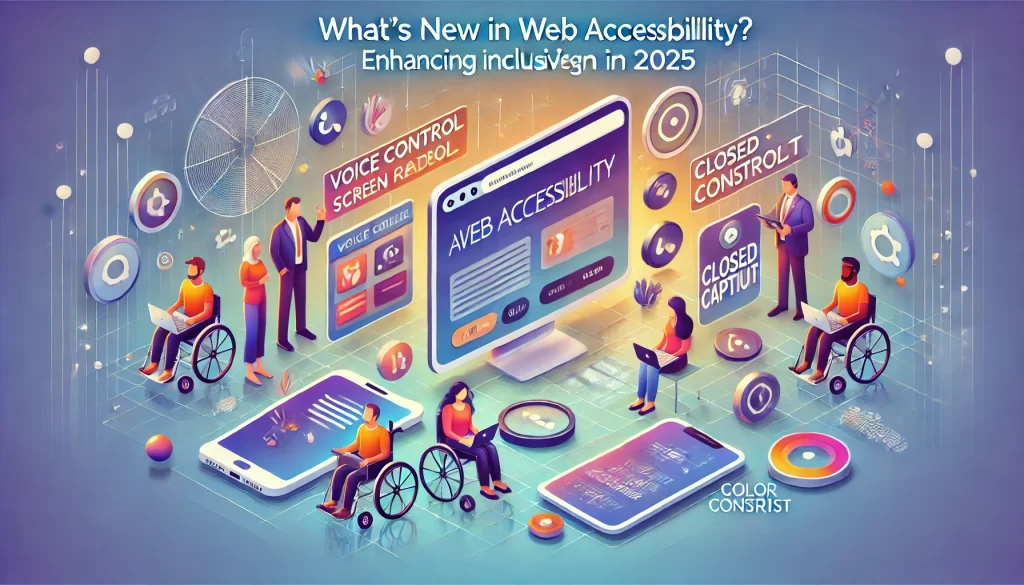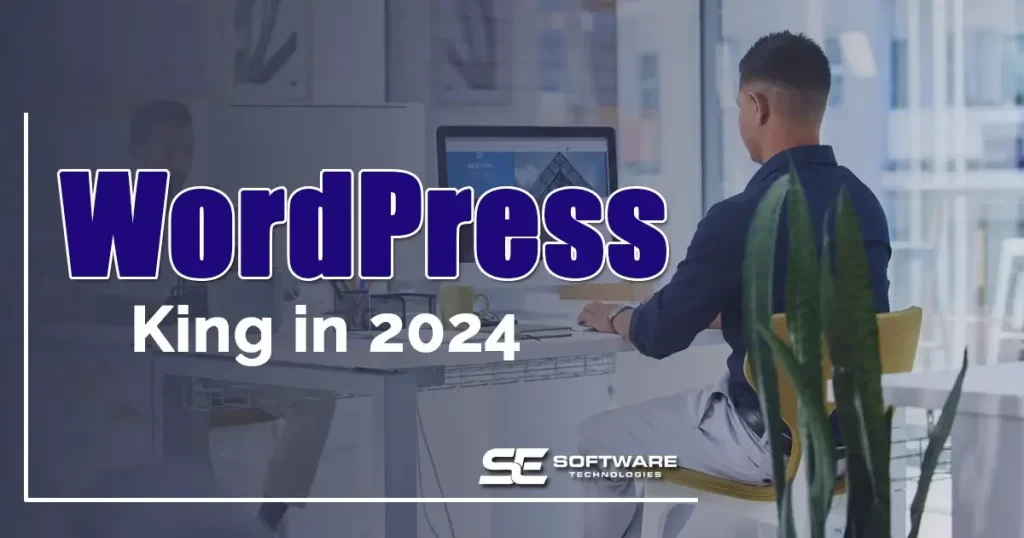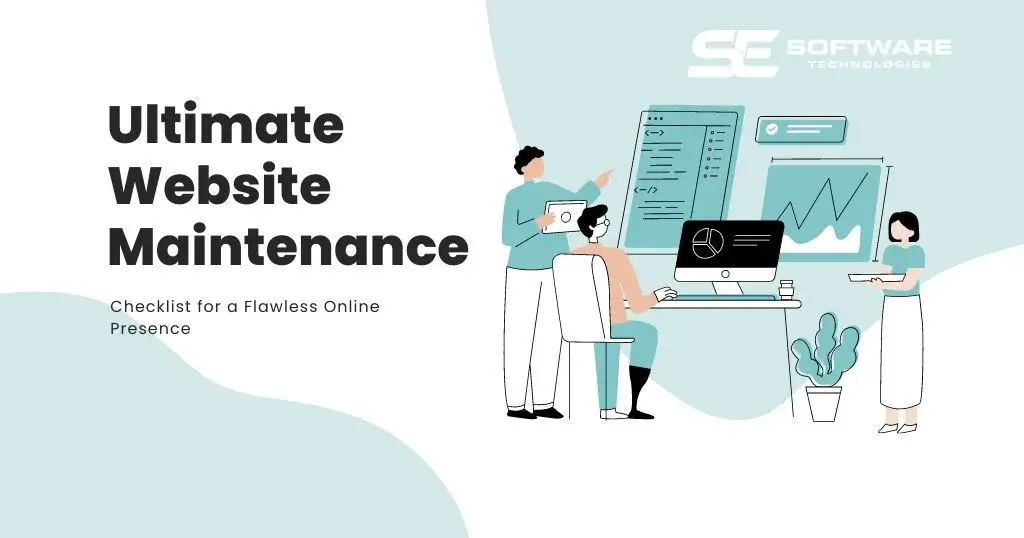As we approach the year 2025, the conversation around web accessibility continues to gain momentum. With the increasing reliance on digital platforms for everything from shopping to education, ensuring that all individuals, regardless of ability, can navigate and utilize these resources is of paramount importance. This article delves into the latest trends and innovations in web accessibility, the role of inclusive design, and how technology, particularly artificial intelligence (AI), is shaping a more inclusive digital landscape.
Understanding Web Accessibility
Web accessibility refers to the inclusive practice of designing websites, applications, and digital content that can be accessed and used by everyone, including people with disabilities. This encompasses a wide range of considerations, including visual, auditory, motor, and cognitive impairments. The goal is to ensure that users can perceive, understand, navigate, and interact with the web effectively.
The Importance of Web Accessibility
Accessibility is not just a legal requirement; it is a moral imperative. According to the World Health Organization (WHO), over one billion people worldwide experience some form of disability. This statistic underscores the need for digital inclusion, which ensures that all individuals can participate fully in society through accessible digital resources.
In 2025, we will likely see an increased emphasis on web accessibility, with organizations understanding that inclusive design is not only beneficial for users with disabilities but also enhances the overall user experience for everyone. Accessibility has a direct impact on usability, customer satisfaction, and even brand reputation. Companies that prioritize accessibility can tap into a broader audience, which can lead to increased revenue and customer loyalty.
Inclusive Design: A Key Component of Accessibility
Inclusive design is a design philosophy that seeks to create products and services that are accessible to as many people as possible. It goes beyond compliance with accessibility standards and aims to address the diverse needs of users. This approach fosters empathy, encouraging designers to consider a wide range of human experiences.
The Principles of Inclusive Design
- Recognize Diversity: Understand that users come with different abilities, backgrounds, and experiences.
- Provide Choice: Offer multiple ways to interact with a product or service, accommodating various preferences and needs.
- Remove Barriers: Identify and eliminate obstacles that prevent access to digital content.
- Empower Users: Create interfaces that allow users to customize their experiences based on their preferences and needs.
- Iterate and Improve: Continuously seek user feedback and make necessary adjustments to enhance accessibility.
As we look to 2025, the principles of inclusive design will become more integrated into web development processes, leading to a more user-centered approach that enhances accessible web design.
Accessibility Trends in 2025
As we approach 2025, several key accessibility trends are emerging that will shape the future of web design and development. These trends are influenced by technological advancements, evolving user needs, and a growing awareness of the importance of digital inclusion.
1. AI-Powered Accessibility Tools
Artificial intelligence is transforming the landscape of web accessibility. AI tools can analyze web content and automatically generate solutions to improve accessibility. For instance, AI can assist in creating alternative text for images, providing audio descriptions for video content, and even identifying accessibility issues during the design phase.
In 2025, we can expect a proliferation of AI-powered tools that will not only enhance the accessibility of existing content but also streamline the design process for new websites and applications. These tools will help designers and developers create accessible web design from the outset, reducing the need for extensive remediation later on.
2. Voice and Gesture Interfaces
The rise of voice assistants and gesture-based interfaces is changing how users interact with digital content. As voice recognition technology becomes more sophisticated, websites will increasingly incorporate voice navigation, allowing users to browse and interact with content using spoken commands.
Similarly, gesture recognition technology will enable users to interact with devices using movements rather than touch. This is particularly beneficial for individuals with mobility impairments. As these technologies become more prevalent in 2025, web accessibility will expand to include these innovative interaction methods, making digital content more inclusive.
3. Multimodal Accessibility
The concept of multimodal accessibility recognizes that users may have different preferences and needs when it comes to consuming content. In 2025, we can expect a shift towards providing multiple ways to access information, such as text, audio, video, and interactive elements.
For example, a single piece of content may be available as a text article, an audio podcast, and a video presentation. This approach allows users to choose the format that best suits their needs, promoting digital inclusion and enhancing the overall user experience.
4. Enhanced Mobile Accessibility
With the increasing use of smartphones and tablets, ensuring mobile accessibility is critical. In 2025, responsive design will be the norm, with websites automatically adjusting to different screen sizes and orientations. This will include optimizing touch targets, ensuring readable text, and maintaining accessibility features across devices.
Developers will need to prioritize mobile accessibility from the start, considering how users with disabilities interact with mobile interfaces. This may involve implementing larger buttons, providing voice navigation options, and ensuring compatibility with screen readers and other assistive technologies.
5. Focus on Mental Health and Cognitive Accessibility
As awareness of mental health and cognitive disabilities grows, web accessibility in 2025 will increasingly address the needs of users with cognitive impairments. This includes simplifying navigation, minimizing distractions, and providing clear, concise content.
Designers will focus on creating interfaces that reduce cognitive load, making it easier for users to process information. This may involve using plain language, intuitive layouts, and visual aids to enhance understanding.
6. Collaboration and Community Engagement
The future of web accessibility will involve greater collaboration between designers, developers, users, and advocacy groups. In 2025, organizations will be encouraged to engage with individuals with disabilities throughout the design process, seeking their input and feedback.
This collaborative approach will ensure that accessibility is not an afterthought but an integral part of the design process. By involving users in discussions about their needs and experiences, designers can create more effective solutions that genuinely address barriers to access.
The Future of Web Accessibility: Looking Ahead to 2025
As we move towards 2025, the future of web accessibility will be shaped by advancements in technology, evolving user needs, and a commitment to inclusivity. The following key themes will emerge as we navigate this evolving landscape:
1. Increased Compliance with Accessibility Standards
In 2025, organizations will be held to higher standards of accessibility compliance. The Web Content Accessibility Guidelines (WCAG) will continue to evolve, and designers and developers must stay informed about changes to these standards.
Regular accessibility audits will become a standard practice, ensuring that websites and applications meet compliance requirements. This proactive approach will not only help organizations avoid legal issues but also foster a culture of inclusivity.
2. Education and Training
As accessibility becomes a fundamental aspect of web development, education and training will be critical. In 2025, developers, designers, and content creators will require ongoing training on accessibility best practices, tools, and technologies.
Organizations will need to invest in professional development, ensuring that teams are equipped with the knowledge and skills to create accessible digital experiences. This investment will pay off by improving user experiences and broadening audience reach.
3. Emphasis on User Experience for Disabilities
The concept of UX for disabilities will gain traction as organizations recognize the value of creating inclusive experiences. User experience design will prioritize accessibility, ensuring that digital content is not only functional but also enjoyable for all users.
This emphasis on user experience will involve integrating accessibility features seamlessly into the design process, rather than treating them as add-ons. As a result, users with disabilities will enjoy experiences that are just as engaging and enjoyable as those without disabilities.
4. AI and Machine Learning in Accessibility
The integration of AI and machine learning will continue to reshape web accessibility. In 2025, we can expect advanced algorithms that analyze user behavior and preferences, automatically adjusting content to enhance accessibility.
For example, AI could analyze how users interact with a website and suggest changes to improve accessibility based on their behavior. This data-driven approach will help organizations create more inclusive digital experiences tailored to individual needs.
5. Intersectionality in Accessibility
Recognizing that disabilities intersect with other identities, such as race, gender, and socioeconomic status, will be crucial in 2025. Web accessibility will need to account for these intersections, ensuring that solutions are inclusive for diverse populations.
This approach will require a nuanced understanding of how different barriers affect individuals and a commitment to addressing these issues holistically. By considering intersectionality, organizations can create digital experiences that truly reflect the diversity of their users.
Best Practices for Enhancing Web Accessibility
To create a more inclusive digital landscape in 2025, organizations should adopt the following accessibility best practices:
1. Conduct Regular Accessibility Audits
Regular accessibility audits should be conducted to identify and address potential barriers. This involves using automated testing tools, manual testing, and user feedback to evaluate the accessibility of digital content.
2. Involve Users in the Design Process
Engaging users with disabilities in the design process is essential for creating effective solutions. By seeking their input, organizations can gain valuable insights into their needs and experiences.
3. Provide Accessibility Training
Organizations should invest in ongoing accessibility training for their teams. This ensures that developers, designers, and content creators are equipped with the knowledge and skills to create inclusive experiences.
4. Stay Updated on Accessibility Standards
Keeping abreast of changes to accessibility standards, such as WCAG, is crucial. Organizations must adapt their practices to comply with evolving guidelines and best practices.
5. Leverage Technology for Accessibility
Organizations should leverage technology, such as AI and machine learning, to enhance accessibility. These tools can streamline the design process and improve the user experience for individuals with disabilities.
Conclusion: A Commitment to Accessibility in 2025 and Beyond
As we look towards 2025, the commitment to web accessibility will be more critical than ever. Organizations must recognize that creating inclusive digital experiences is not just a legal obligation but a moral imperative that benefits everyone.
By embracing inclusive design principles, leveraging emerging technologies, and engaging users in the design process, we can shape a more accessible digital landscape. The journey towards accessibility is ongoing, and it requires collaboration, education, and a steadfast commitment to ensuring that everyone, regardless of ability, can access and engage with the web.
By prioritizing web accessibility today, we are paving the way for a more inclusive tomorrow, where everyone can enjoy the full benefits of the digital age.





